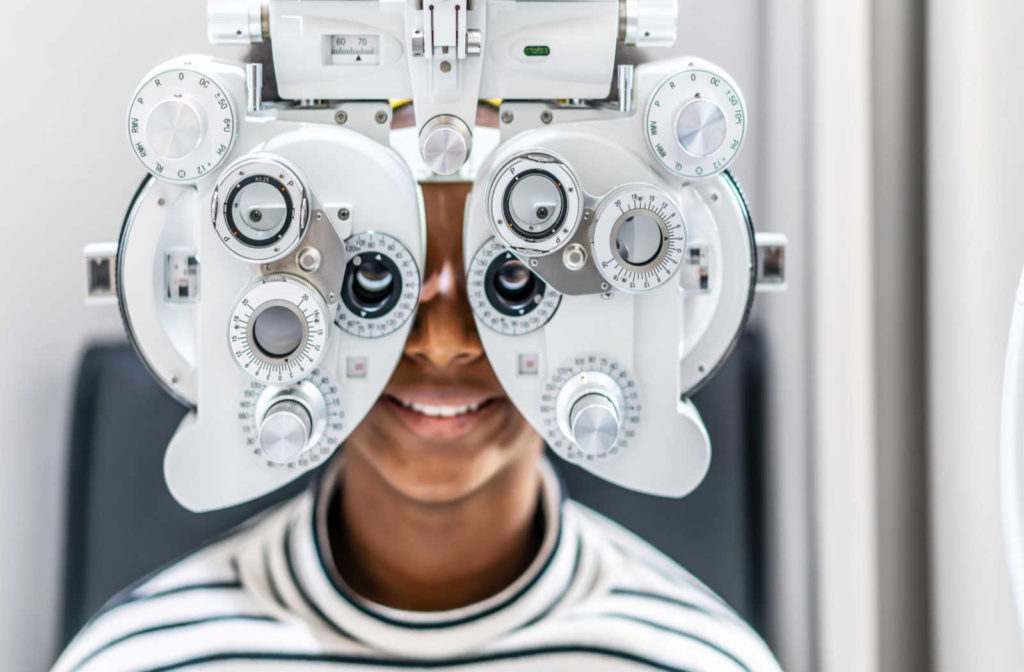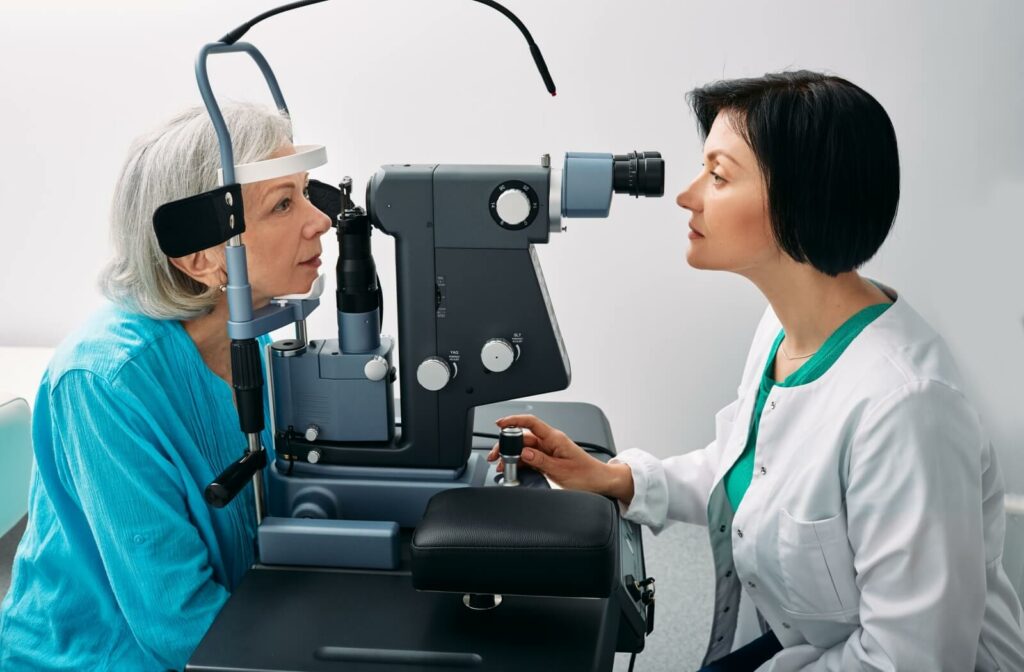Exploring the most up to date Technical Innovations in Optometry and What They Mean for Optometrists
In the ever-evolving field of optometry, current technological developments are improving how professionals approach eye treatment. From the accuracy of Optical Comprehensibility Tomography to the nuanced understandings offered by AI-driven diagnostic devices, these technologies are setting brand-new requirements in patient evaluation and treatment. Teleoptometry is positioned to redefine accessibility, making certain that competence goes beyond geographical restrictions. As these improvements permeate the practice, optometrists are faced with the difficulty of embracing these tools to boost person end results. Yet, the question stays: exactly how will these technical shifts redefine the roles and obligations within the profession?
Advancements in Diagnostic Devices
Advancing the area of optometry, advancements in analysis tools have actually revolutionized the method eye treatment professionals analyze and detect visual impairments and eye problems. The previous decade has witnessed considerable technical improvements, making it possible for more exact and comprehensive evaluations. Optical Comprehensibility Tomography (OCT), as an example, offers high-resolution cross-sectional photos of the retina, enabling for the very early detection of illness such as glaucoma and age-related macular degeneration. This non-invasive imaging technique has become vital in contemporary optometric practice.
An additional secret technology is the intro of innovative corneal topography systems, which map the surface area curvature of the cornea with precision. These tools are specifically beneficial for suitable call lenses and detecting corneal conditions. Moreover, electronic retinal imaging has transformed standard ophthalmoscopy, offering thorough, breathtaking views of the retina that assist in extensive aesthetic evaluations.
The growth of wavefront aberrometry has also been important, allowing the evaluation of refractive mistakes with unequaled accuracy (Optometrist Chino). This technology aids in personalizing corrective lenses and boosting medical outcomes for refractive surgeries. Jointly, these diagnostic advancements encourage optometrists to provide exceptional client treatment, making sure very early intervention and customized therapy strategies, inevitably improving aesthetic health results
AI in Person Monitoring
Building on the structure of sophisticated analysis devices, the incorporation of synthetic knowledge (AI) in patient administration represents a transformative leap for optometry. AI systems are significantly utilized to enhance performance, precision, and personalization in person care.
Additionally, AI-driven platforms facilitate structured client interactions and administrative processes. Automated scheduling, virtual consultations, and customized follow-up plans not only enhance person contentment yet additionally optimize time management for professionals. These systems can triage clients based on the seriousness of their problems, making certain that those in important demand receive timely attention.
Moreover, AI improves decision-making by offering eye doctors with evidence-based referrals and therapy paths. By integrating information from digital wellness documents, AI devices supply insights that educate clinical decisions, minimizing the risk of mistakes and boosting individual results. As AI proceeds to advance, its function in individual management will likely broaden, reshaping the landscape of optometric care.
Breakthroughs in Retinal Imaging
In the world of optometry, retinal imaging has seen impressive technological advancements that are enhancing diagnostic abilities and person treatment. Innovations such as Optical Comprehensibility Tomography (OCT) and fundus photography have revolutionized just how eye doctors examine the retina and picture.
Boosted imaging methods like OCT angiography are further refining analysis precision. This non-invasive method maps blood circulation in the retina, using vital insights into vascular health without the demand for color shots. Additionally, adaptive optics modern technology is being integrated right into retinal imaging systems to fix ocular aberrations, supplying extraordinary picture clearness. Such improvements promote the identification of minute retinal modifications that might indicate condition development.
Additionally, innovations in fabricated knowledge are enhancing retinal imaging by allowing computerized analysis of huge datasets. These systems help optometrists in recognizing patterns a measure of pathology, thus improving diagnostic accuracy and effectiveness. Collectively, these advancements are changing retinal imaging right into a foundation of contemporary eye care, improving outcomes and broadening therapeutic possibilities.
Teleoptometry's Growing Duty
Teleoptometry is increasingly ending up being an important element of eye care, driven by improvements in data and analysis tools. As optometry welcomes electronic improvement, teleoptometry promotes remote consultations, allowing optometrists to extend their services past typical limits. This is specifically advantageous in country and underserved areas where accessibility to specialized eye care is often restricted. By leveraging high-resolution video clip conferencing and progressed retinal imaging, optometrists can perform comprehensive eye examinations from afar, making certain timely medical diagnosis and therapy.
The combination of synthetic intelligence (AI) further enhances teleoptometry, making it possible for the analysis of aesthetic data and aiding in the discovery of eye conditions such as glaucoma and diabetic person retinopathy. AI-powered algorithms can swiftly translate complicated imaging data, providing optometrists with beneficial understandings that strengthen medical decision-making.
Moreover, teleoptometry sustains connection of treatment via smooth assimilation with digital wellness records (EHRs), enabling eye doctors to preserve extensive individual histories. When seeking advice from with various experts., this makes sure that individuals receive consistent and customized care even.
Regardless of these advantages, obstacles remain, including making certain data safety and security and handling client assumptions. However, teleoptometry represents a substantial stride in the direction of even more accessible, efficient, and patient-centered eye treatment. As modern technology develops, its role is poised to broaden additionally.

Future Patterns in Eye Treatment
A myriad of ingenious fads is readied to improve the future of eye pop over here care, driven by technological advancements and the progressing demands of people. One considerable fad is the integration of artificial intelligence (AI) in diagnostics, which promises to improve the precision and effectiveness of eye assessments. AI formulas can evaluate substantial amounts of information from retinal pictures, potentially detecting conditions like diabetic retinopathy and glaucoma earlier than traditional methods.
In addition, customized medicine is obtaining grip in optometry, with genetic testing informing tailored therapy plans. This strategy intends to optimize patient outcomes by customizing treatments to specific hereditary profiles. Wearable innovation, such as smart get in touch with lenses, is also coming up, supplying real-time tracking of intraocular stress or glucose levels, therefore offering constant insights right into eye and systemic health and wellness.
The adoption of enhanced fact (AR) and online reality (VR) in training and patient education is another arising trend. These innovations supply immersive experiences that can improve understanding and article source abilities both for patients and optometrists. As these trends progress, eye doctors must stay abreast of technological advancements to offer advanced care, guaranteeing better patient outcomes and complete satisfaction in the dynamic landscape of eye care.
Final Thought

Collectively, these diagnostic developments encourage eye doctors to provide superior patient care, ensuring very early intervention and customized therapy techniques, eventually enhancing aesthetic health outcomes.

As these innovations continue to content advance, optometrists must adjust and include them right into technique, inevitably maximizing workflow performance and raising the standard of eye care provided to individuals.